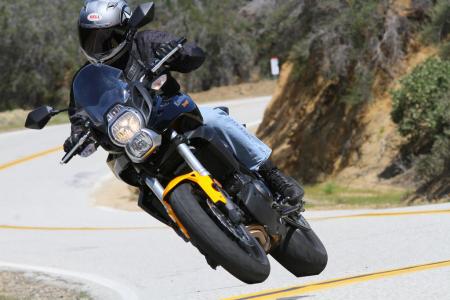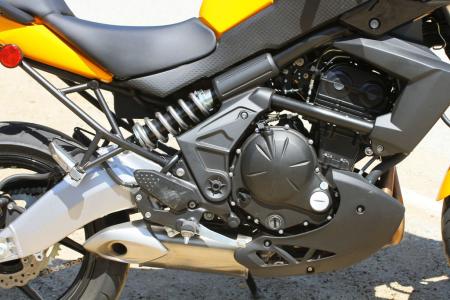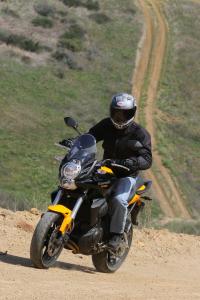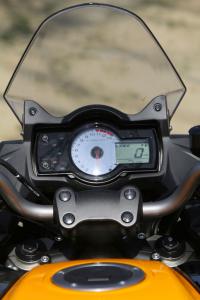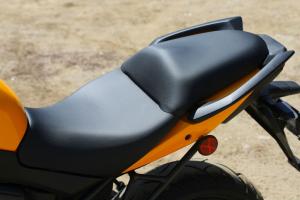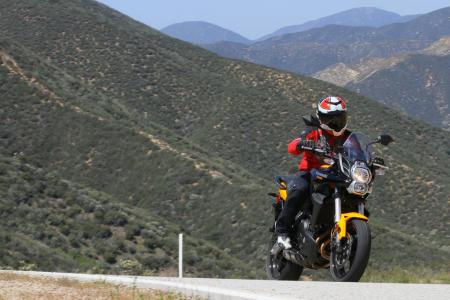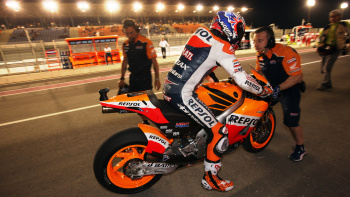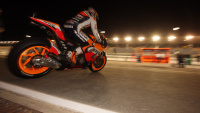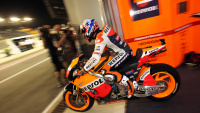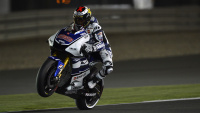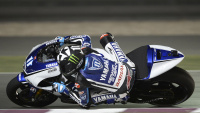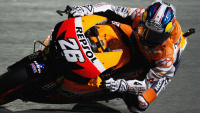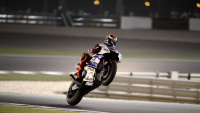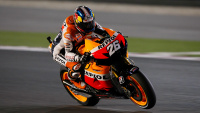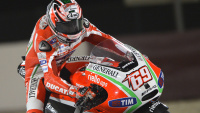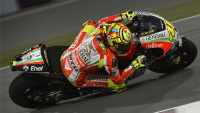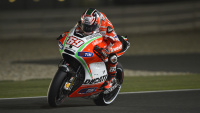 In the 2012 entry to middle class of "Dual Purpose" Kawasaki motorcycles line-up, Kawasaki offered the 2012 Kawasaki KLX250S and KLX250SF edition, in the top level Kawasaki also released the KLR650 but there is none Kawasaki dual purpose with the engine below of 250cc capacity, so you can get the 250cc only and up. As you know, with the Kawasaki KLX label means that you can ride the bike in the dirt way area, it's not only a city ride but it's also mountain bike ride. There is 2 series of KLX250, the S edition and also the SF edition, both of bikes uses the same engine but there is also some different things between KLX250S and KLX250SF, I will try to write more about it but today let talk first about the 2012 Kawasaki KLX250S edition.
In the 2012 entry to middle class of "Dual Purpose" Kawasaki motorcycles line-up, Kawasaki offered the 2012 Kawasaki KLX250S and KLX250SF edition, in the top level Kawasaki also released the KLR650 but there is none Kawasaki dual purpose with the engine below of 250cc capacity, so you can get the 250cc only and up. As you know, with the Kawasaki KLX label means that you can ride the bike in the dirt way area, it's not only a city ride but it's also mountain bike ride. There is 2 series of KLX250, the S edition and also the SF edition, both of bikes uses the same engine but there is also some different things between KLX250S and KLX250SF, I will try to write more about it but today let talk first about the 2012 Kawasaki KLX250S edition. On road and Off road, this is the key advantages of KLX motorcycles and I love it so much, well, with the 250cc DOCH single cylinder engine, I know that 2012 Kawasaki KLX250S bike can't head to head with another 250cc Twin-Cylinder Kawasaki bikes like 2012 Ninja 250R, the performance of Ninja on the road will better, but wait, if if comparing it in the off road way, the KLX250S is absolutely better, this is the key of KLX250S. In 2012, Kawasaki motorcycles actually offered many of off road bikes with small engine capacity like 2012 KLX140 series, but it's not Dual Purpose, it has been made special for off road only. So, there is no other way to get a multifunction motorcycles, just buy the KLX250S, KLX250SF or also KLR650 series.

2012 Kawasaki KLX250S Main Specs
- 249cc, 4-stroke, Liquid-Cooled, DOHC, 4-valve single
- Keihin CVK34 of carburetion
- Digital CDI ignition
- Six-speed transmission
- Semi-double cradle, high-tensile steel of frame type
- 250mm semi-floating petal disc with two-piston hydraulic caliper (front brake)
- 240mm petal disc with single-piston hydraulic caliper (rear brake)
Rear suspension / Wheel Travel : Uni-Trak® with Adjustable Preload, 16-Way Compression and Rebound Damping Adjustment / 9.1 in.
Front suspension / Wheel Travel : 43mm Inverted Cartridge Fork with 16-Way Compression Damping Adjustment / 10.0 in.
More about KLX250S
- 2010 Kawasaki KLX250S
- 2011 Kawasaki KLX250S
Looks good enough for 250cc dual purpose motorcycles, you can ride it on the 2 road type, KLX250S also is one of the light weight Dual Purpose bike and it's good and friendly bike for everyone, it's also equipped with digital instrumentation and push button electric start for easy to use. 2012 Kawasaki KLX250S available with only one color, that is green. Nice bike from Kawasaki.

 new style, but we always can meet the original Rossi colors, shiny/bright green colors on the front side/number, Desmosedici GP12 also comes with many of colors combination such as Red, White, Black and Green. Well, I hope they will give a real performance in the next race, caused if I have to tell the truth, I haven't satisfied about this team and of course Ducati GP12 bike when the 1st MotoGP race in action, the performance problem between Rossi and Ducati actually can we see in the 2011, but it's looks Ducati and Rossi need more times to handle their problem until today. Good luck for Ducati and teams, and please fight back your rivals in MotoGP. Enjoy.
new style, but we always can meet the original Rossi colors, shiny/bright green colors on the front side/number, Desmosedici GP12 also comes with many of colors combination such as Red, White, Black and Green. Well, I hope they will give a real performance in the next race, caused if I have to tell the truth, I haven't satisfied about this team and of course Ducati GP12 bike when the 1st MotoGP race in action, the performance problem between Rossi and Ducati actually can we see in the 2011, but it's looks Ducati and Rossi need more times to handle their problem until today. Good luck for Ducati and teams, and please fight back your rivals in MotoGP. Enjoy.
